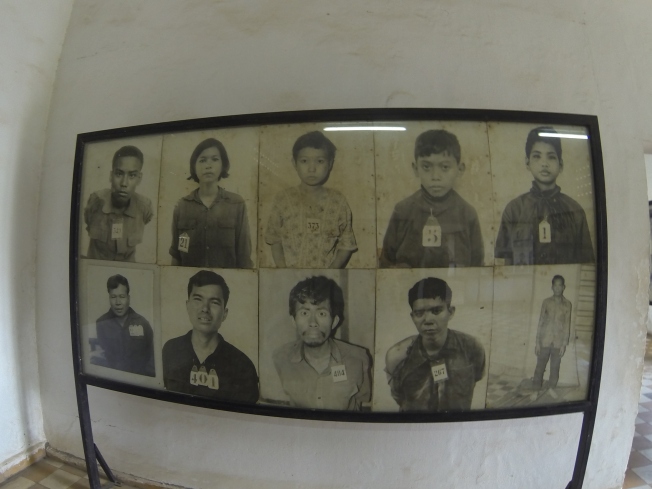10th August, 2014
The sky is clear and I am in a boat on the Mekong River, off to Vietnam. I can see little mangroves on our way, and small shrubs that are very peculiar in both of Cambodia’s rainy and dry seasons. The Mekong River hosts the world’s largest freshwater fishery and is the second-most biodiverse river on Earth. In certain periods of the year it flows South and for the other periods it changes directions and flows North. This makes the river have a very unique habitat and is one of the reasons why you can find so many fish species here.
We are in Phnom Penh for 2-3 days and have seen the Killing Fields already. The Khmer Rouge atrocities are unbelievable, and seeing the thousands of skulls with my naked eye made my hair stand on end. I cannot imagine how much the native Cambodians suffered during the four long Khmer Rouge governed years between 1975 and 1979.
I am currently reading a book called ‘They First Killed My Father.’ The main character is a little girl named Leung, who is telling the story of her family of nine, including Pa, Ma, and the seven siblings. In the beginning of the book the author depicts city life in Phnom Penh during old days, where everybody is busy with their daily life routines, far away from understanding the meaning of war. One day in April 1975 everyone is forced to leave the cities and take the roads towards rural areas. No one knew where this journey would end and the Khmer Rouge soldiers told them they would go back to their homes within three days, which soon turned out to be a lie, a big lie.
This book explains all the delicate details of the Cambodian people’s sufferings during the mass atrocities. Although I’ve heard many stories like this (i.e. Bosnian War, the Nazi Holocaust, etc.), this one is extremely unique in the sense that one fourth of the entire Cambodian population was executed in just four years, and one can see the traces of this through the pile of skulls in the Killing Fields.
Phnom Penh has a unique smell, which till now, I still cannot not figure out what is. It could have been tamarind or some creamy sauce, but I am just speculating! The street bazaars provide a scene showing some of the freshwater diversity found in the Mekong River. There are snails, crabs, eel fish and many others that I do not know the name of. I am not sure how people are not disgusted (empathy Bilgenur empathy!) by the appearance of all the naked flesh exhibited on the stalls.
There does not seem to be any refrigerator with all the meat sold outside under the boiling Cambodian sun. I feel like they should get rotten and fleshy very quickly, but interestingly, people buy them no matter what.
My disgust over the street food leaves itself to some sort of curiosity, and my exploratory side wants to try different tastes. However, I did not find myself courageous enough to try the grasshoppers sold on the streets side by side and do not think I ever will. However I do understand why people would eat these insects. Basically, these insects are noted for their nutrients, having a high content of protein, and are eaten by people who survive with a relatively low per capita income and purchasing power. Yet, it is not the only indicator for why insects are part of their diet. Also, based on the IMF World Economic Outlook, 2014, Cambodia’s Gross Domestic Product (GDP) seems to show an increasing trend.
I’ve seen many homeless people in Phnom Penh, and it struck me hard ever since I arrived in the city. It may be because Singapore, where I am living now, is so sterile, safe and homeless-free that I could not envision how the economically lower class thrive in Cambodia’s current dismal state.
 Living in Singapore, I sometimes feel myself in a bubble, where people do not suffer from the lack of basic commodities, such as food and accommodation (even though I may be incorrect in saying this).
Living in Singapore, I sometimes feel myself in a bubble, where people do not suffer from the lack of basic commodities, such as food and accommodation (even though I may be incorrect in saying this).
Overall, Cambodia to me is a country of smiling people who have suffered tremendously under the Khmer Rouge Regime. I feel so bad for how much they lost in order to survive. And yet, I am amazed by their generous smile, which you would see once your eyes come across with theirs.

This is the very instant moment I captured with my camera on the streets across Mekong River. Perfect image for Nicholas A. McGirr’s words in his book Life of Death: “Death truly does have life, and walks with and lives through us everyday.”
PS: Many thanks to Francesca McGrath for proofreading.









